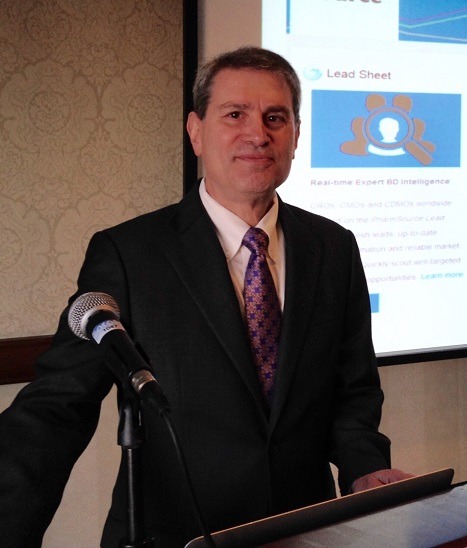CDMO Outlook: Preparing for the Next Opportunity
Demand for capacity has driven the market for contract development and manufacturing (CDMO) services, but capacity alone will not be enough in the near term.
CDMO strategies need to look beyond today’s opportunities and brace for changing market conditions.
Inside the CDMO market
In the white-hot market for contract development and manufacturing services, the only strategic dimension of any import seems to be capacity. Demand for manufacturing capacity is high, and supply is tight. CDMOs of drug substances and drug products are announcing capacity expansions nearly every week. It’s a seller’s market, and CDMOs that have capacity to sell have the upper hand in the relationship with the customer.
 |
|
Jim Miller |
The challenge for today’s CDMO investment decisions is that they are being made toward the end of an industry cycle that may not have much longer to run. Funding for emerging biopharma companies has always been cyclical and the current cycle, already five years old, has run longer than most. Trendy sectors usually attract inexperienced investors so anxious to be in the game that they underwrite increasingly marginal opportunities (think of people buying bitcoin at $20,000 just six months ago). We are probably well into that phase in the emerging biopharma investment cycle.
The broader macroeconomic environment is also getting more uncertain due to disruptions in global trading relationships, central bank pullbacks from stimulative policies, and growing political uncertainties in many countries. The result is that we have the makings of a collision between a trendy investment sector with high valuations and an investor community that is likely to become more risk-averse.
Given the two-to-three-year lead time necessary for biologics and fill/finish capacity investments, CDMO investment decisions would seem to be increasingly risky because the new capacity is likely to come on line as the market softens. While having capacity is differentiating when you have it and somebody else doesn’t, it becomes a commodity once sufficient capacity comes on stream or demand for it lessens. In those conditions, price competition can ensue.
Forward-looking CDMO executives need to be thinking about how to differentiate their offerings and avoid the price competition that will come as supply and demand for capacity come more into balance. The best strategy may not be to invest in more of the same capacity that is in demand today, but rather to build capabilities that will be more unique and customer-centric for the next phase of the cycle.
The biopharmaceutical industry provides a broad array of customer targets to aim at. It is richly segmented along a variety of dimensions beyond just the nature of the physical product. Companies are differentiated by characteristics such as product innovation (novel active pharmaceutical ingredients, new delivery/formulation, generic, over-the-counter); geographic markets (home versus foreign, global versus regional); and financing source (self-funded versus externally financed). Using characteristics like these one can identify many different customer segments, each with distinct service requirements beyond just manufacturing capacity.
Consider, for instance, the many foreign companies that are seeking to enter the US market. European and Japanese companies, in particular, are trying to establish a US presence in response to the very difficult pricing environments in their home countries and the growing risks to international trade. In addition to having insufficient product volumes to justify in-market manufacturing facilities, many of those companies have limited experience with US regulatory, supply-chain and end-product requirements and practices. A CDMO with particular capabilities for integrating new entrants into the US market could build a favored market position among non-US companies seeking entry.
Customer-based strategies have not been common in the CDMO industry; manufacturing technology and capacity have traditionally been the focus of decision-makers. Probably the best-known customer-oriented strategy in the industry has been the “one-stop shop,” i.e., the combined offering of drug-substance and drug-product manufacture geared to emerging biopharma companies lacking the experience and overhead to manage a multi-tiered supply chain. In reality, however, the one-stop concept has often ended up as separate services offered under a common brand name rather than a truly integrated offering delivering significant benefits to targeted customers. The development and empowerment of customer-facing activities, such as project management and customer service, are typically more challenging to measure and communicate than are new hardware investments.
CDMO executives will also be challenged to improve their operating performance. Strong demand and rapid growth can hide a myriad of sins including out-of-control costs, poor customer service, and inefficient processes. A weaker market environment will expose these faults, as well as create new risks related to high-levered balance sheets resulting from debt taken on to finance new investments and acquisitions.
The message here is not that the CDMO industry and its customers face collapse in the near term. Emerging biopharma companies continue to have access to new capital, often enough to fund multiple years of operation. But even in the midst of the strong recent performance, economists and Wall Street money managers expect a softer global economy by 2020. CDMO executives must balance the desire to exploit the rich opportunities presented by the current robust biopharmaceutical market with plans for operating in a less generous environment.
Jim Miller is founder and former president of PharmSource, now part of GlobalData. He is a respected authority on the CDMO industry and advises CDMOs and investors on strategic issues in the industry.






